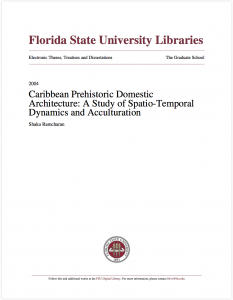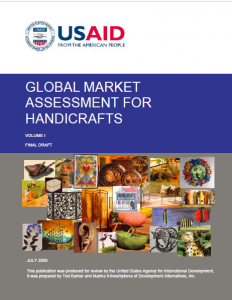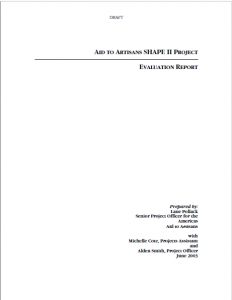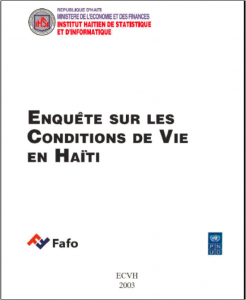THE DEVELOPMENT ARCHIVE
THE DEVELOPMENT ARCHIVE
EKO Haiti Development Archive serves as a clearinghouse of reports submitted by development and aid organizations, policy reports and recommendations developed by in-country experts to address problems in development and aid and other academic and literature-based documents.



- Karen Gibbs, Ted Barber
- September 2006
- Art, Handicrafts, Music and Dance, Culture, Arts and Society
A Market-Driven, Value-Chain Approach to Economic Development & Poverty Reduction based on: USAID Global Market Assessment for Handicrafts; USAID Haitian Handicraft Value Chain Analysis ; Haitian handicraft development projects; First-hand market experience.


Haiti is known throughout the Caribbean, Americas and Europe for the quality and creativity of its handicrafts, especially metalwork. The capacity of the handicrafts industry to turn that advantage into a larger and growing market share is constrained by a number of factors. The objective of this assessment is to better understand the constraints and opportunities of the handicrafts industry in Haiti, and to present the findings to key stakeholders in the industry in order to develop a competitiveness strategy focused on greater efficiency, increased differentiation (including quality improvements) and accessing new markets.


The advent of naive art to Haiti in the 1940s upset the «world of plastic language» there. Naive art arose at an «ethnological turning point» and emerged as one of its multiple fecundations. An analysis brings to light two facts. For one thing, the aesthetic judgement that established this new artistic genre in the country did not proceed from the native aesthetics advocated by the Haitian school of ethnology. For another, this school had a difficult time keeping abreast of this genre, thinking about it or even approaching it. Two distinct phenomena were happening within a single framework that made it easy to establish a «kinship» between the two, especially since ethnology proposed a global view of society that served as the basis for working out and justifying explanations of the artistic phenomenon. Haitian «discourse» about art referred to this basis with its strong and weak points.


The study of settlement geography, demography and social behavior in the prehistoric Carib and Taino societies of the Caribbean has recently become a prominent domain of interest to archaeologists working in these islands. Archaeological floor plans for prehistoric houses within the islands of St. Eustatius, Barbados, St. Thomas, Cuba and Puerto Rico demonstrate the cultural continuity of house shape, settlement organization and social organization from the early Saladoid to the contact period.




